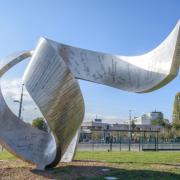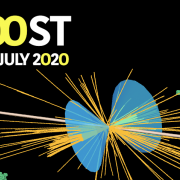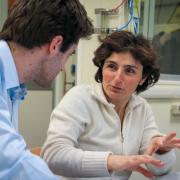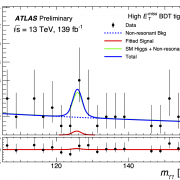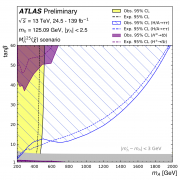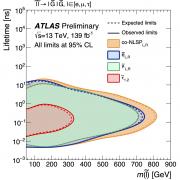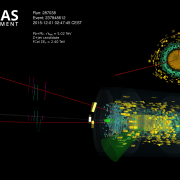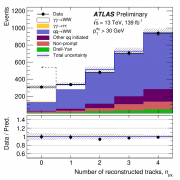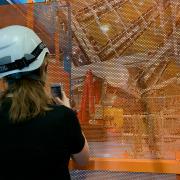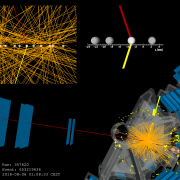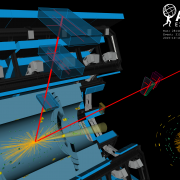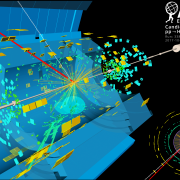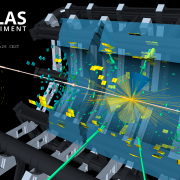Access to Collaboration Site and Physics Results
Updates tagged: “SUSY group”
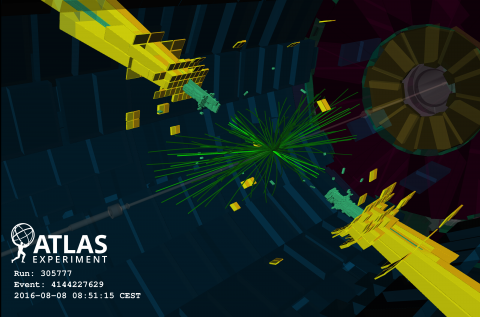
Particle-hunting at the energy frontier
There are many mysteries the Standard Model of particle physics cannot answer. Why is there an imbalance between matter and anti-matter in our Universe? What is the nature of dark matter or dark energy? And many more. The existence of physics beyond the Standard Model can solve some of these fundamental questions. By studying the head-on collisions of protons at a centre-of-mass energy of 13 TeV provided by the LHC, the ATLAS Collaboration is on the hunt for signs of new physics.
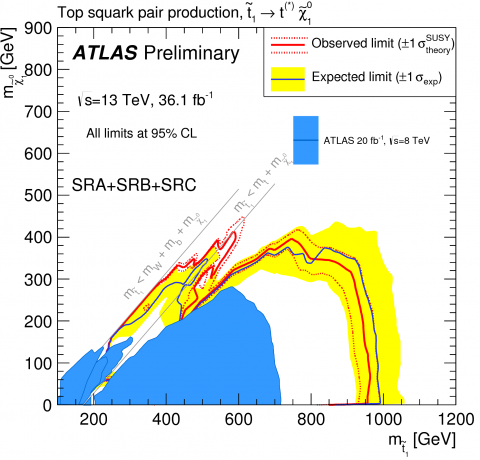
Searching for signs of the “stop”
In new results presented at the Moriond Electroweak conference, the ATLAS Collaboration has sifted through the full available data sample of the LHC’s 13 TeV proton collisions in search of a specific SUSY particle: the heavy partner to the top quark, called the “top squark” or “stop”
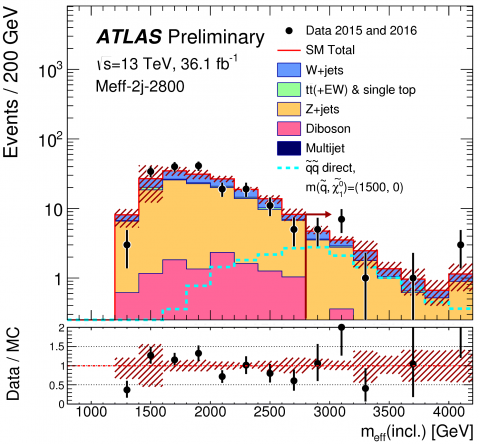
The search for super-particles continues!
Many of the most important unanswered questions in fundamental physics are related to mass. Why do elementary particles, which we have observed and measured at CERN and other laboratories, have the masses they do? And why are they so different, with the mass of the top quark more than three hundred thousand times that of the electron? The presence of dark matter in our universe is inferred because of its mass but, if it is a particle, what is it? While the Standard Model has been a tremendously successful theory in describing the interactions of sub-atomic particles, we must look to even larger masses in search of answers and, potentially, new supersymmetric particles

Further progress in the quest for SUSY particles
ATLAS physicists have been eagerly searching the collected data for evidence of the production of the supersymmetric top quark (squark). Recent ATLAS results feature five separate searches for this elusive particle.

Searching for new phenomena in final states with missing momentum and jets
The nature of dark matter remains one of the greatest mysteries in physics. While extraordinary, the Standard Model can not explain dark matter, whose existence is well established by cosmological measurements.
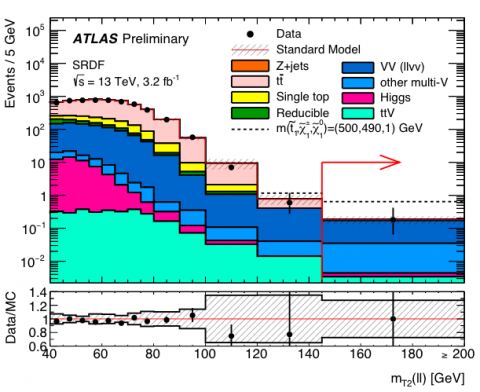
Wanted: SUSY particle still at large
According to classical electrodynamics, the electromagnetic energy (and mass) of a point-like electron should be infinite. This is of course not the case! The solution of the riddle is antimatter - the ‘vacuum’ around every electron is filled with a cloud of electrons and anti-electrons and the combined energy turns out to be finite.
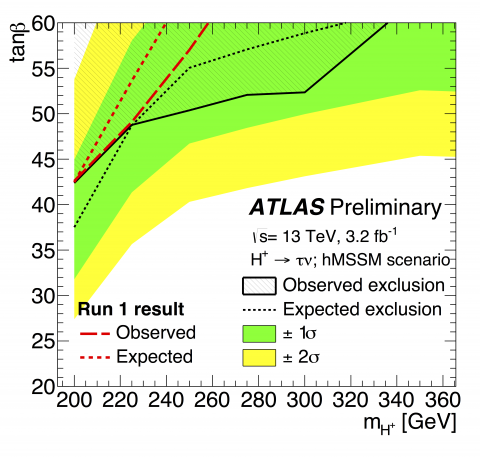
Are there more Higgs bosons?
The results presented by the ATLAS collaboration during the Moriond Electroweak 2016 conference set new limits on a potential extended Higgs sector.

Devouring dark matter theories
Most of the matter in the universe is made not of stuff we understand, but of invisible “dark matter” particles. We have yet to observe these mysterious particles on Earth, presumably because they interact so weakly with normal matter. The high energy collisions in the Large Hadron Collider provide our best current hope of making dark matter particles, and thus giving us a better understanding what most of the universe is made of.
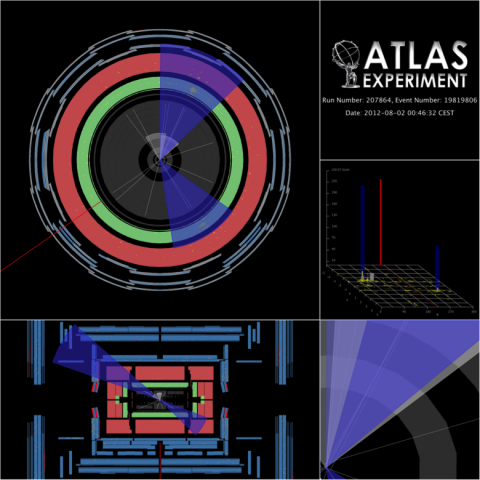
In search of super charm
If all the experimental evidence supports a theory, why should anyone want to dream up additional particles? Yet exactly this situation arose in the late 1960s. At that time, when the complete table of the known hadrons could be explained with just three quarks, theorists were already proposing a fourth, which they whimsically called “charm”.
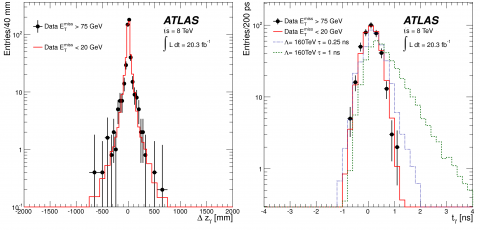
Searches for new physics with photons produced at vertices displaced from the collision point
Theories, such as supersymmetry, propose the existence of new types of particles to explain important questions about the universe, such as the nature of dark matter. ATLAS has performed a search for one such type – exotic heavy particles that have lifetimes long enough that they travel partway through the detector before decaying, at what is called a displaced vertex.


